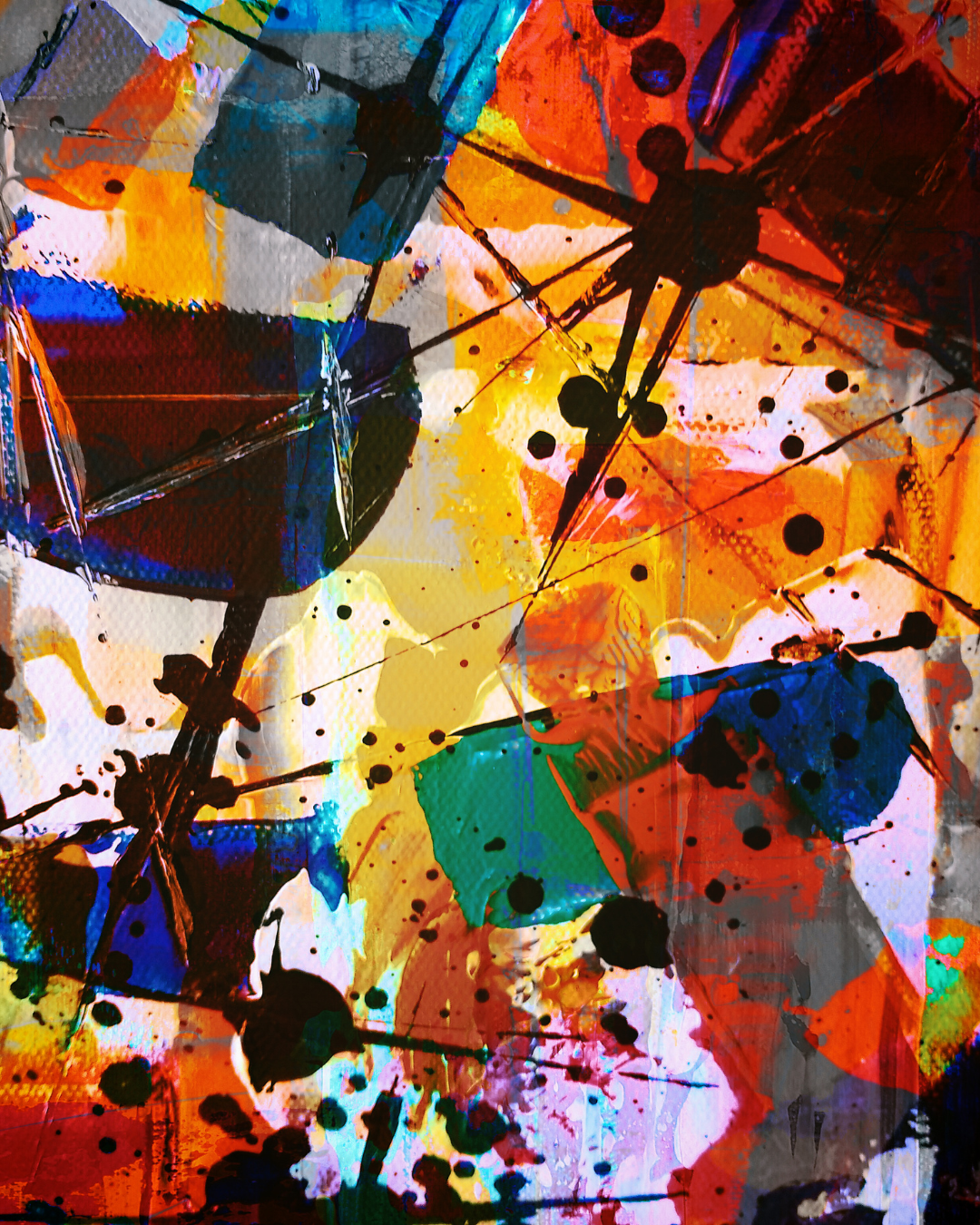Abstract art challenges conventional forms and invites creators to explore their inner visions. Understanding various abstract art techniques can significantly enhance an artist’s creative journey. These methods allow artists to express emotions and concepts that go beyond traditional representation, opening a realm where imagination reigns supreme.
From bold brush strokes to unique textural applications, abstract painting techniques emphasise spontaneity and freedom. Artists experiment with colour, form, and composition, often prioritising intuition over meticulous planning. This exploration not only shapes their artwork but also contributes to personal growth and artistic identity.
As the boundaries of creativity continue to expand, exploring abstract art techniques provides invaluable insights. Engaging with these methods can inspire innovation and encourage artists to connect more deeply with their work. Talented individuals and aspiring creators alike can find new dimensions in their art by embracing this powerful form of expression.
Fundamentals of Abstract Art
Abstract art focuses on non-representational forms, prioritising expression through colour and composition. The essence of this art form lies in how these elements interact to create emotional resonance and visual impact.
Understanding Abstract Art
Abstract art departs from traditional representation, favouring shapes, colours, and forms that might not depict real-life objects. It invites the viewer to interpret the artwork subjectively, often evoking emotions or thoughts through visual stimuli alone.
Artists working in this genre often employ techniques that challenge conventional perspectives. By eliminating recognisable subject matter, they encourage an exploration of the viewer’s imagination. This creates a personal connection between the art and the audience, facilitating varied interpretations based on individual experiences.
The Role of Colour in Abstract Art
Colour is a fundamental component in abstract art, playing a significant role in conveying emotion and setting the tone. Artists frequently use primary colours—red, yellow, and blue—as foundational elements in their work. These colours can be mixed to produce a palette that ranges from warm and vibrant to cool and subdued.
Colour theory also plays an essential part in this context. Artists often utilise analogous colours (those next to each other on the colour wheel) to create harmony. Conversely, employing complementary colours (opposite colours on the wheel) can produce a striking contrast, drawing the viewer’s attention to specific areas within the artwork.
Composition Principles
Composition in abstract art focuses on the arrangement and interplay of elements within the canvas. Artists consider balance, rhythm, and movement to guide the viewer’s eye and create an engaging experience. For example, a balanced composition can evoke stability, while asymmetry might suggest dynamism. Techniques such as layering and juxtaposition of shapes influence how the viewer interprets the artwork.
Effective composition leads to a cohesive piece that resonates with viewers, encouraging exploration of the forms created. Whether using geometric patterns or organic shapes, the approach to composition significantly determines the artwork’s impact.
Abstract Painting Techniques
Abstract painting encompasses a variety of techniques that enhance the visual impact of the artwork. Key methods include texture application, innovative mark-making, and fluid painting styles, all contributing to an engaging final piece.
Impasto and Texture
Impasto is a technique where thick layers of paint are applied to the canvas, creating a three-dimensional effect. Artists often use acrylic paint or oil paint for this method, applying it with a palette knife or brush to achieve varying textures.
This technique allows for depth in the artwork, as the light interacts differently with raised areas compared to flat sections. The choice of colour can influence the viewer’s perception, with bold colours often enhancing the dramatic nature of the impasto. Artists should consider the drying time of their medium, as acrylics dry quickly, requiring swift application and layering. The resulting texture can evoke emotions and invite viewers to experience the artwork from different angles.
Sgraffito and Mark-Making
Sgraffito involves scratching through a top layer of paint to reveal the contrasting layer beneath. This technique can be performed with various tools, including palette knives or brushes. Artists often utilise sgraffito to add intricate details and mark-making in their work, forging a connection between the layers. The interplay of lines and forms created can give depth and complexity to an abstract piece. Mixing colours beneath a top layer can lend surprising results once scratched, leading to unique outcomes that engage the viewer. The rhythm of the marks can also convey movement and energy within the painting.
Drip Painting and Pouring Methods
Drip painting is closely associated with abstract expressionism, where paint is dripped or poured onto the canvas. This technique, popularised by artists like Jackson Pollock, emphasizes spontaneity and movement. Pouring methods involve tilting the canvas to allow the paint to flow, creating organic shapes and patterns. The fluid nature of the mediums used can enhance the artwork’s visual appeal.
Artists might experiment with different viscosities of paint, mixing mediums to achieve desired effects. The unpredictable nature of drip painting often results in unexpected forms and textures, inviting exploration and interaction in the viewing experience.
Mediums and Materials in Abstract Art
The choice of mediums and materials plays a crucial role in the expression and execution of abstract art. Various techniques give artists unique capabilities to convey their vision and emotions. Key mediums include acrylics, oils, watercolours, and various mixed media options.
Acrylics and Oils
Acrylic paint is popular due to its versatility and quick drying time. It can be used on various surfaces, including canvas and paper. Acrylic painting techniques allow for layering, glazing, and impasto effects, enabling vibrant colour mixes that can be easily manipulated.
Oil painting, on the other hand, is celebrated for its rich texture and depth of colour. It dries slowly, providing artists ample time for blending and detailing. Techniques like scumbling and glazing further enrich the work, allowing for subtle shifts in tone. Both mediums lend themselves well to abstract compositions, encouraging exploration and innovation.
Watercolours and Gouache
Watercolour paints are known for their transparency and fluidity. Artists manipulate water to achieve different effects, such as washes and gradients. This medium can create delicate, ethereal pieces, making it suitable for soft abstraction. Using watercolour techniques allows for spontaneous expression, inviting numerous layering possibilities.
Gouache, a more opaque version of watercolour, provides a different experience. It retains a matte finish, offering a vibrant palette that stands out. The thickness of the gouache can yield striking contrasts, making it appealing for artists aiming for boldness within abstraction. Both mediums inspire creativity and varied interpretations.
Mixed Media and Collage
Mixed media art combines multiple materials and techniques in a single work, enriching the abstract narrative. Artists often incorporate traditional paints, such as acrylic or oil, alongside non-traditional items like fabric, paper, or found objects. This approach encourages experimentation and fosters unique textures and colours.
Collage, a key component of mixed media, involves assembling different materials to create cohesive compositions. This technique not only enhances dimensionality but also adds depth to the narrative. Artists can juxtapose images, textures, and colours, providing a dynamic visual experience that challenges the viewer’s perception.
Advancing Your Abstract Art Practice
To enhance an abstract art practice, artists can explore techniques that emphasise both structure and fluidity. By incorporating elements such as geometric shapes and textures, individuals can develop a mature approach and distinctive style.
Exploring Geometric and Fluid Abstraction
Geometric abstraction focuses on the use of shapes, lines, and angles. Artists may create compositions using sharp lines, squares, and circles to evoke a sense of order. This technique allows for the precision of form and a balance of colours, with a limited palette enhancing visual impact.
In contrast, fluid abstraction embraces spontaneity and emotion. Techniques such as acrylic pouring create organic shapes that capture movement and rhythm. Artists can experiment with palette knife painting for added texture or utilise black-and-white contrasts to highlight form.
Combining the two styles can yield dynamic results, allowing for a comprehensive exploration of both rigid and fluid aesthetics. Thus, artists are encouraged to experiment and adapt various elements within their work.
Depth and Perspective Techniques
In abstract art, creating depth often involves layering paint and manipulating colour gradients. Artists can implement techniques like textured abstract painting to add dimension. Using thicker paint can create a three-dimensional effect, drawing the eye into the artwork.
Employing perspective is also essential. Continuous line drawing can help outline forms that lead the viewer’s gaze across the canvas. This practice promotes movement and interaction, essential for engaging abstract pieces.
Additionally, artists should explore contrasting colours and tonal shifts to enhance depth perception. Dispersing lighter hues against darker shades can create illusions of space, offering a sense of immersion within the artwork.
Cultivating a Personal Style
Developing a distinctive artistic voice is crucial for an abstract artist. By studying various techniques, they can discern which methods resonate most with them. Action painting can be an effective way to break free from traditional constraints, encouraging spontaneity and expression.
Artists should also consider their influences and inspirations. Identifying the elements that inspire them can significantly aid in shaping their unique style. Regular experimentation and practice encourage growth and refinement in their technique.
Finally, maintaining a reflective practice allows artists to assess their progress. Documenting thoughts and experiments in painting journals can provide insights into personal development while uncovering new ideas. Such a method fosters both creativity and confidence.



